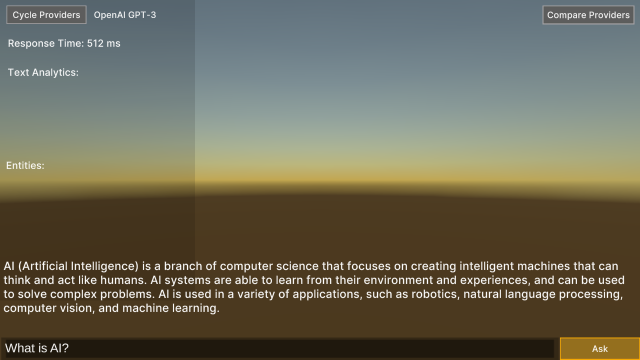The RIDE standalone application features a collection of example scenes that display key capabilities of the API.
This tutorial shows how developers can add additional NLP web services to RIDE.

This tutorial shows how developers can add additional NLP web services to RIDE.
Background:
Refer to the NLP Service Comparison page under the Examples documentation for more about NLP web services currently in RIDE.
Achievement Unlocked! What other cloud solutions might you implement within RIDE to benefit your research and simulations? |